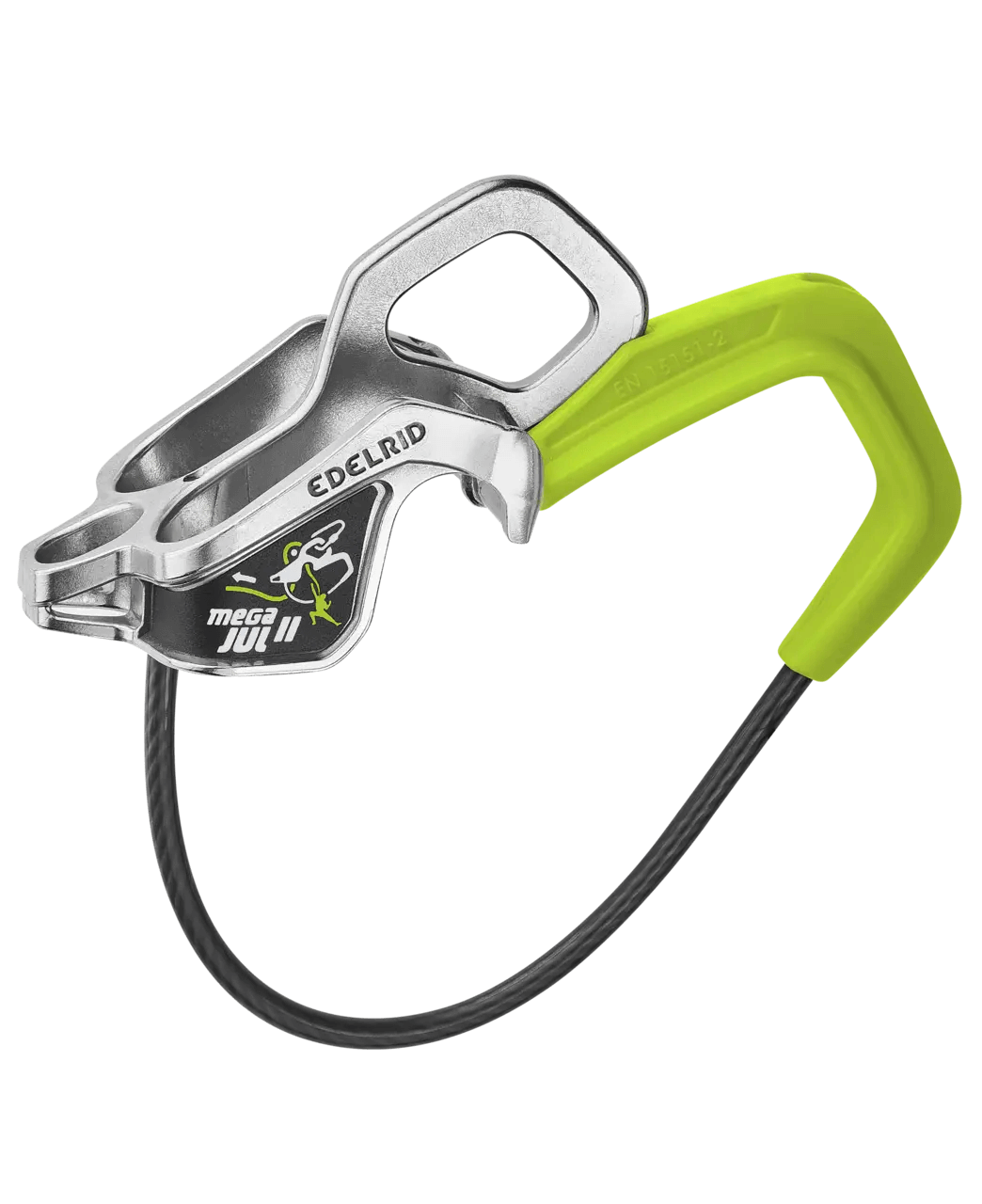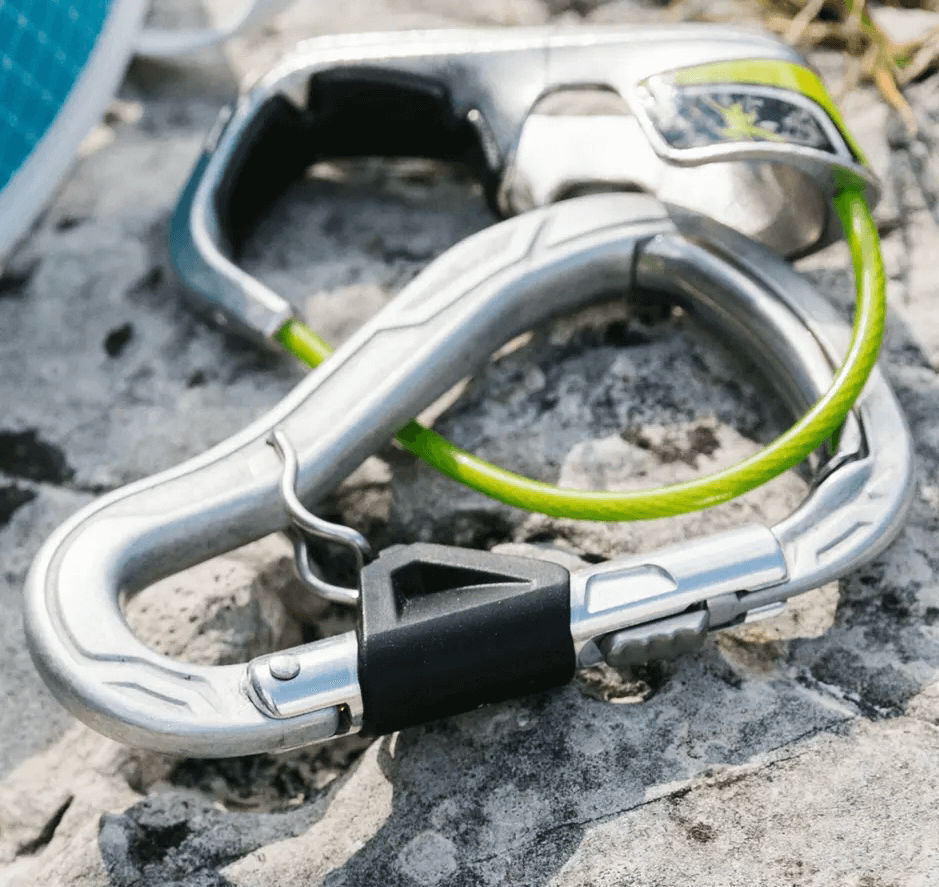Edelrid’s Design Team Is at the Top of Their Game
Edelrid is making some of the coolest, most forward-thinking climbing gear at the moment. My first exposure to their brand was through the Mega Jul, a belay device that offers assistive braking without any moving parts while looking and working (mostly) like a traditional tube-style belay device. That was over 10 years ago, and even back then they were walking the walk while talking the talk about producing sustainable, long-lasting gear by incorporating stainless steel where other climbing brands use less durable aluminum. In most cases, that makes the product notably heavier, but with the Mega Jul, the increased strength actually meant they could produce a smaller device that was really really lightweight.

Since then, I’ve moved onto to using their Giga Jul belay device — the Mega Jul’s also steel but bigger, smoother-running sibling — and I have my eye on their Pinch — another assistive breaking belay device, but one that works more like the gold standard GriGri by Petzl. Edelrid did something groundbreaking in making the Pinch able to be used without a separate carabiner to attach it to your harness. I’ll admit that it looks unusual and I’ve had to look into the product development to feel comfortable trusting my life to it, but I can’t deny that it does provide a key benefit of getting the device closer to your harness so that you’re able to take in and pay out more slack with every motion. And of course it uses steel in the key spots where the rope could wear it down.

Which brings me to their carabiners. Many people default to getting the lightest gear as possible so they don’t feel extra weight on their harness while climbing. But I’m not pushing the edge of climbing performance, and I tend not to notice the weight of my rack on my harness once I’ve left the ground and am concentrating on my movement anyway. So I don’t mind carrying a bit more gear, or a bit heavier gear if it is more useful or durable than the alternative. Edelrid is attempting to eliminate that trade-off altogether. In their “bulletproof” series of carabiners, they mold the frame of the carabiner out of your standard aluminum alloy, but then then add stainless steel inserts in the basket of the carabiner where the rope runs over it.

This provides two key benefits. First, as I mentioned before, better durability. More durable gear that wears less means you don’t have to replace your gear as often (fewer items produced, less money spent, less environmental impact). Second, cleaner ropes. When grooves are worn into aluminum carabiners by the rope running over them, it doesn’t just weaken the carabiner, that aluminum has to go somewhere. It ends up as a sort of dust or residue imbued in your rope. It’s not super noticeable at a glance, but that aluminum oxide is the reason your hands end up blackened after having climbing rope run through them all day (as I do as a guide). Seeing as my rope is my number one safety gear when climbing, I really want to protect it as much as possible. Less aluminum getting worn into my rope sounds good to me.
So I’m pretty psyched to have picked up a couple of their bulletproof carabiners to use on my anchor systems and a belay version for my belay device, where rope constantly runs through and wears things down.1

And I’ll end my gushing for Edelrid’s innovations with their soft goods (ropes and slings). Many climbers will use a double-length sling for building anchors, rappel extensions, and personal anchor systems. They’re probably the most versatile tool in a climber’s toolbox, besides the climbing rope itself. But a potential problem with slings is that they can be less durable because they don’t have a sheath protecting the core like a rope, and they can be more difficult to tie knots with because they’re flat instead of tubular and get twisted quite easily.
For the last few years, Edelrid’s Aramid Cord Sling has been quite popular because it combines the benefits of a sheath/core rope, with the versatility of a double-length sewn loop. The aramid (Kevlar) gave it excellent durability against abrasion from rubbing against rocks, but it knots and unknots very easily. Their newest version swaps the aramid for HPME, which is supposedly even more durable while being more supple to work with.

Finally, Edelrid’s rope design. Your basic rope comes in one color pattern from end to end, but it’s really helpful to know where the middle of your rope is, so they’ll typically be marked with a small black section there. More modern ropes switched to being bi-pattern so that it’s both more obvious where the switches and it can’t wear away like the black markers can. But they’re usually still the same color scheme, just a slightly different pattern like spirals and checkers. Edelrid took things one step further by making their newest bi-pattern rope out of two completely different colors on each side, like red and blue, so you can’t miss when you cross the middle mark. Something that’s especially easy to do, and can be catastrophic, in the dark even with a regular bi-pattern rope. It literally looks like you have two different ropes hanging on your backpack when you’re hiking into the crag.

Better yet, at the point where the two pattern weaves meet, you can feel where they’re woven into each other — that’s not the case with traditional bi-pattern ropes. It’s so helpful to feel that transition run through your hands as a belayer while you keep your eyes on your climber. Since you typically only want to use half your rope length while climbing (so you can still be lowered all the way back to the ground), it’s very handy to feel that texture and know your climber has reached the middle without taking your eyes off them.

Safer, more durable, and more sustainable (we didn’t even talk about how they’re choosing not to anodize their carabiners into fancy colors so that they don’t need to use more chemicals!). Edelrid’s innovative engineering and clever solutions to long-standing problems in the climbing scene mean I’m looking at their products first when I need to replace my climbing gear.
Their newest belay carabiner is so close to perfect. The opening for belay loop keeper just a little too small and I wish it pivoted down from the gate side instead of the spine side. And the slide gate closure isn’t quite as ergonomic as I expected. But it’s still a great belay carabiner.↩︎